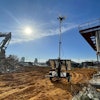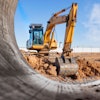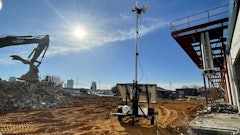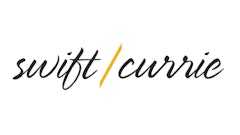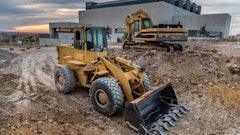
A leader within a construction company recently suggested that perhaps I needed to write an article entitled, “Business Development for Non-BD People.” I’d like to dedicate this article then to this individual because I couldn’t agree more with her sentiment…and idea!
In today’s market, it can pay handsomely for a construction company to have every employee alerted to business opportunities. Though most non-business development construction workers are proud of their company, few have received any sales or customer service training.
Think about the unlimited possibilities that your company might generate in additional sales leads if every one of your workers were primed and prepared for such contacts. One great contractor I know has done just that. I’ll share their incredible discovery later.
A very professional contractor, with a rich and long history in construction, was so committed to engaging all of its workers with business development opportunities that the contractor actually made it one of the company’s strategic objectives. Thus, it received senior leader oversight and support and empowered hundreds of employees to leverage their relationships within the community to build business opportunities for their company.
The lessons learned from this organization might prove helpful to your construction future. Consider using some of the efforts that this contractor took, along with others that I’ve observed over the years, for your own. Remember, look for the ideas that might help you and tailor those ideas to better fit your company’s culture and image in the community.
1. Invite all of your employees to participate
Field and office employees should be welcomed with open arms to learn about the endless opportunities awaiting their involvement. Many workers — from the front office receptionist to the most seasoned crew foreman to the most ornery yard mechanic — can turn out to be a great “sales person” for your organization.
First of all, hold a company-wide meeting inviting them to take part. Then, communicate with your workers what are some of the opportunities that may very well exist. Opportunities some of your workers might participate include:
- Serving on a local EMS “volunteer” board
- Coaching a child’s sport with other parents (who might have construction needs)
- Representing your company at Christmas by volunteering as a “bell ringer” for Salvation Army
- Handing out bottles of water at a local 10K running event that your company helps to sponsor to raise money for a worthy cause
- Being asked to serve on their local church building committee
- Representing your company at a public event or banquet
This list just considers some of the more formal opportunities. Hundreds of others must be entertained when you consider the countless conversations that your employees engage in with friends, family, neighbors, while standing in line at grocery store check-out lines, or visiting with a friendly acquaintance while pumping gas.
These “moments of possibilities” can really add up over the course of the year. One contractor informed me that based on the number of employees he had, they might interact with more than 150,000 potential customers over a year’s time; or, at least the relationships that might lead to more sales. Additionally, this same owner discovered that some of the interactions were such that even his own “BD Guy” could not have arranged.
2. Teach business development skills to “Non-BD” people
Business Development is a broad term that embraces the entire customer acquisition toolbox. The disciplines of marketing, customer service, sales, market research, public relations, etc., all fit up under the umbrella called Business Development. However, the pinnacle focus for business development is to build relationships that turn to sales for your company.
The following list of skill training is what I would recommend for those in your company who fall under the Non-BD Person:
- Basic communication skills
- How to greet others
- How to maintain a verbal communication
- Non-threatening “probing” skills
- How to talk about your company…proudly and without offending
- Don’t try to sell…just be you!
- How to network with people
- What to say and not say about our company
- How to turn a “warm lead” over to your BD people
Many of these topics are literally one to two hour-long training sessions. The sessions can be led by your current business development staff, senior leaders and any of your employees who have a knack for such things. Don’t be afraid to use that old frumpy looking concrete finisher who also happens to be a potential customer “magnet.” Heck, sometimes, the less “sales-like” the employee the more honest the conversation, and the more successful.
3. Make “moments of opportunities” a meeting fixture
You can’t just invite your people to be more active in reaching out for new customer leads and truly expect that they will naturally comply. At your regular staff and employee meetings, make the “moments of opportunities” part of your normal agenda. Remember, inspect what you expect and you’ll soon have more enthusiasm from your workers than you can shake a stick at.
4. Give all employees “excellence representative” business cards
Business Development people give away their business cards by the hundreds. Can you imagine if every employee working for you were to give away 10, 100, even 200 business cards a year? If you have 20 employees, you might be touching another 200 to 4,000 potential opportunities in the next year. If you’re a larger size contractor “do the math.” I mean, it really does get ridiculous what we might be accessing as future opportunities.
Develop such cards, especially for the workers who might not traditionally have their own business cards. Along with their actual job title, include the role of “Excellence Representative,” or some other significant, and eye-catching job function. Then, include the contact information for your folks who are focused on business development.
5. Focus early BD training on greeting and conversation starters
If you were to start training your non-business development people on business development skills, I’d recommend the following:
- Teaching most of your workers how to properly and professionally shake another person’s hand can be both humorous and educational. Many adults have never been taught how to shake the hand of another human being by their parents or a communication instructor. Teach the full right hand extension handshake rather than the sport’s related “high five” or fist bump. While “high-fiving” might be used between people who already know each other, the more formal handshake is preferred, especially in more formal situations.
- To start a conversation or to move a conversation more to the advantages of your company, here are a couple of training suggestions.
- Instruct your non-BD people on how to say, “Hi, my name is Brad Humphrey. It’s nice to meet you. And your name is?” (While reaching out for the handshake.)
- Conversation transition might very well move along like the following:
- “I’m with ABC Construction. What do you do?”
- “How long have you been with your company?”
- “We love working with other great companies. Have you considered what type of company might work well with your firm’s construction needs?”
- “Hey, I heard your company might be looking at adding on to their current location. I know we’d do a great job for you. Can I give your card to Jack? He’s awesome and is our best estimator.”
While a conversation can begin over discussing the day’s weather or the latest American Idol contestants, I’ve actually heard the comments presented above by a complete business development amateur…and it worked! Remember, if the employee is not a trained business development professional, they can get away with a lot of sincere and elementary comments and be well received.
6. Set BD goals & recognize contributors
If you’re to take this focus seriously I think you really need to set some goals. The goals might look similar to the following:
- Every employee will volunteer for 10 hours of community service a year
- Employees will attend two to three company-sponsored or supported events a year
- Employees will participate in two to three customer appreciation luncheons a year
The sample goals just presented are really not that demanding. In fact, you’ll most likely find that many of your employees will not want to just reach the goals; they’ll want to surpass the goals. I’ve never experienced this type of effort with any construction client of mine that didn’t see the company’s morale improve while also finding more employees who wanted to be more engaged with getting more business opportunities for the company.
Now, if you set goals you must recognize those employees who reach and exceed the goals. Don’t “skimp” on this effort as you’ll surely break the positive feelings if you don’t recognize the effort put out by those wanting to help you grow the business. But how to recognize? Consider a few ideas below.
- Giving away nice company logo’d shirts, hats, pens, etc.
- Verbalizing appreciation at company meetings
- Allowing individuals to “testify” to their efforts, success, experience, etc.
- Having your senior leaders “serve” lunch or dinner to those employees who have been successful
- Informing your customers as to the important role your successful employees have played
- Involving your employees to interact with customers that they may have played a part in landing the work
7. Involve your non-business development people in setting yearly opportunities
For many contractors, paying for a table at local community events, banquets and fundraisers are part of the price of doing business. But don’t overlook other opportunities that some of your non-BD people might be aware of and more excited to support.
You can obviously get crazy with this effort, but you should engage your employees at least in providing their perspective and ideas on what might be good to schedule for each new year. Rotate your team members from year to year, thus getting some new blood for richer thinking, preventing your company from supporting only the same events year after year.
8. Match your non-BD people with your BD folks and leaders when they make BD efforts
There is nothing like seeing business development in action. Let rotating members of your employees join you, your estimators/sales folks when they make visits to customers or are attending “networking” get-togethers. This opportunity can not only allow your non-BD people to “see how it’s done,” but it can also raise the respect that your employees might have for those on your team who are primarily sales oriented. As you and I know, our BD folks don’t just play golf everyday, right?
9. Re-emphasize the need to develop “raving fans” from our existing customer base
It’s well-documented that most contractors enjoy a great amount of success from the same customers year in and year out. The repeat client is the cash flow from which we built a solid base. Now, all of your non-BD people need to clearly understand how critical it is to win the hearts of your customers for the long-term.
We need to educate all of our workers to provide such great customer service that our customers literally become “raving fans” about us, what our company can do for them, leading customers to actually help to sell us to others.
10. Involve your non-BD people in customer “debriefs”
This final tip is quite successful. For the contractor who does execute a customer “debrief” at the conclusion of a project, often the only workers representing the contractor might be the owner, the superintendent or the project manager for the job. That’s a mistake.
Again, rotate your non-BD people through this effort, but involve these folks in this very enlightening exercise. Hearing both applause and criticism from the paying customer is often an awakening experience for employees who traditionally have not taken part in such meetings. Trust me, the lessons learned from each customer debrief will be made known to many other employees in your company before you know it.
Business development that is focused on growing your company is EVERYONE’S business. When your employees are truly convinced that they really can make a positive and growing difference for the company’s success, you will begin to see some of the most incredible business opportunities coming from some of the craziest places.
Take each of the 10 tips into your company’s consideration. Select a few of your more upbeat and positive attitude employees and share the 10 tips for their thoughts. Start today to involve more of your non-BD people and watch both your company’s sales and employee morale and commitment begin to rise!
What do you have to lose? Only more opportunities…for more business.
Here’s to those non-business development people who impact our construction companies. May we be open to allowing them more influence with future customers.
© Brad Humphrey, Pinnacle Development Group/the Contractor’s Best Friend™


